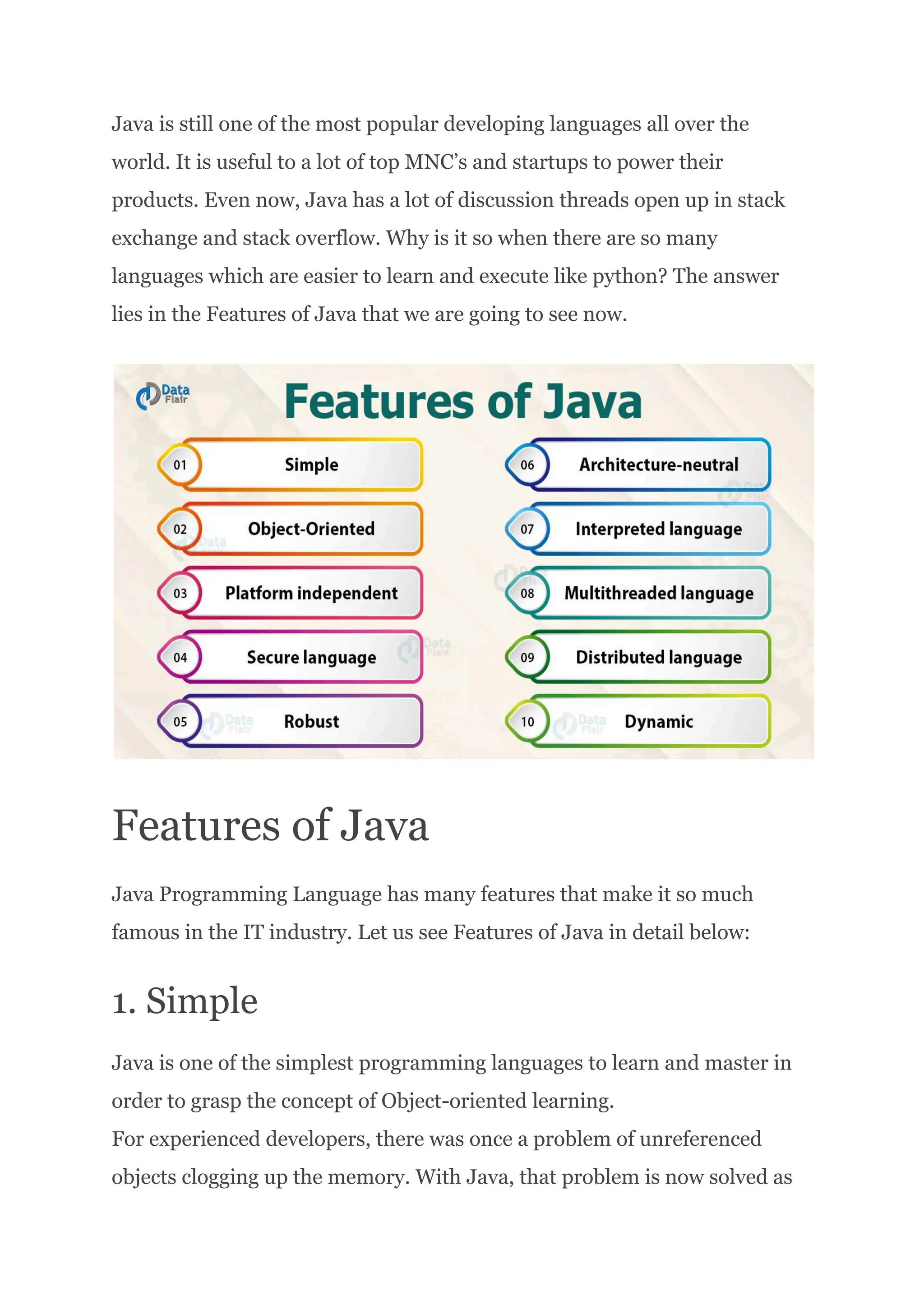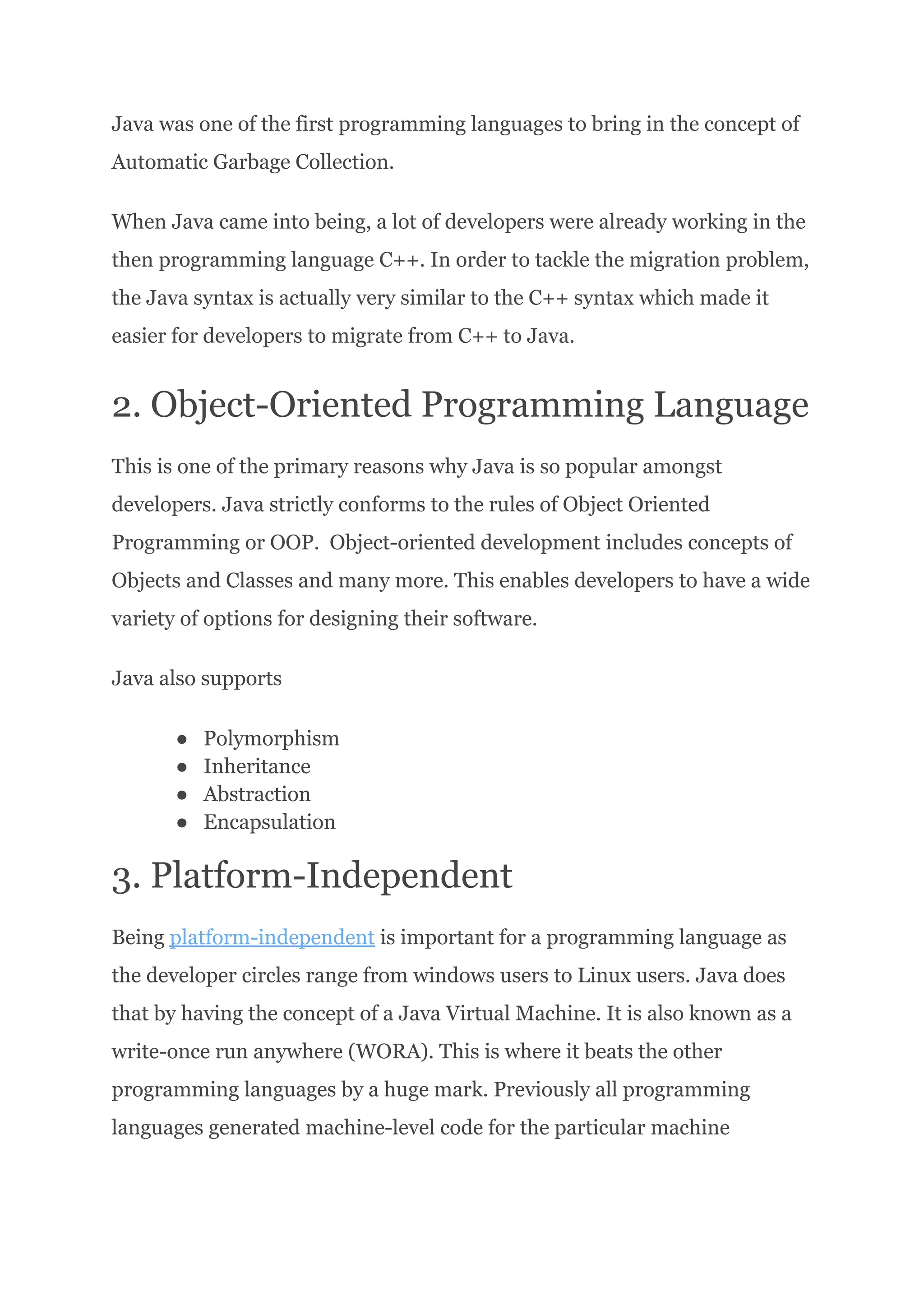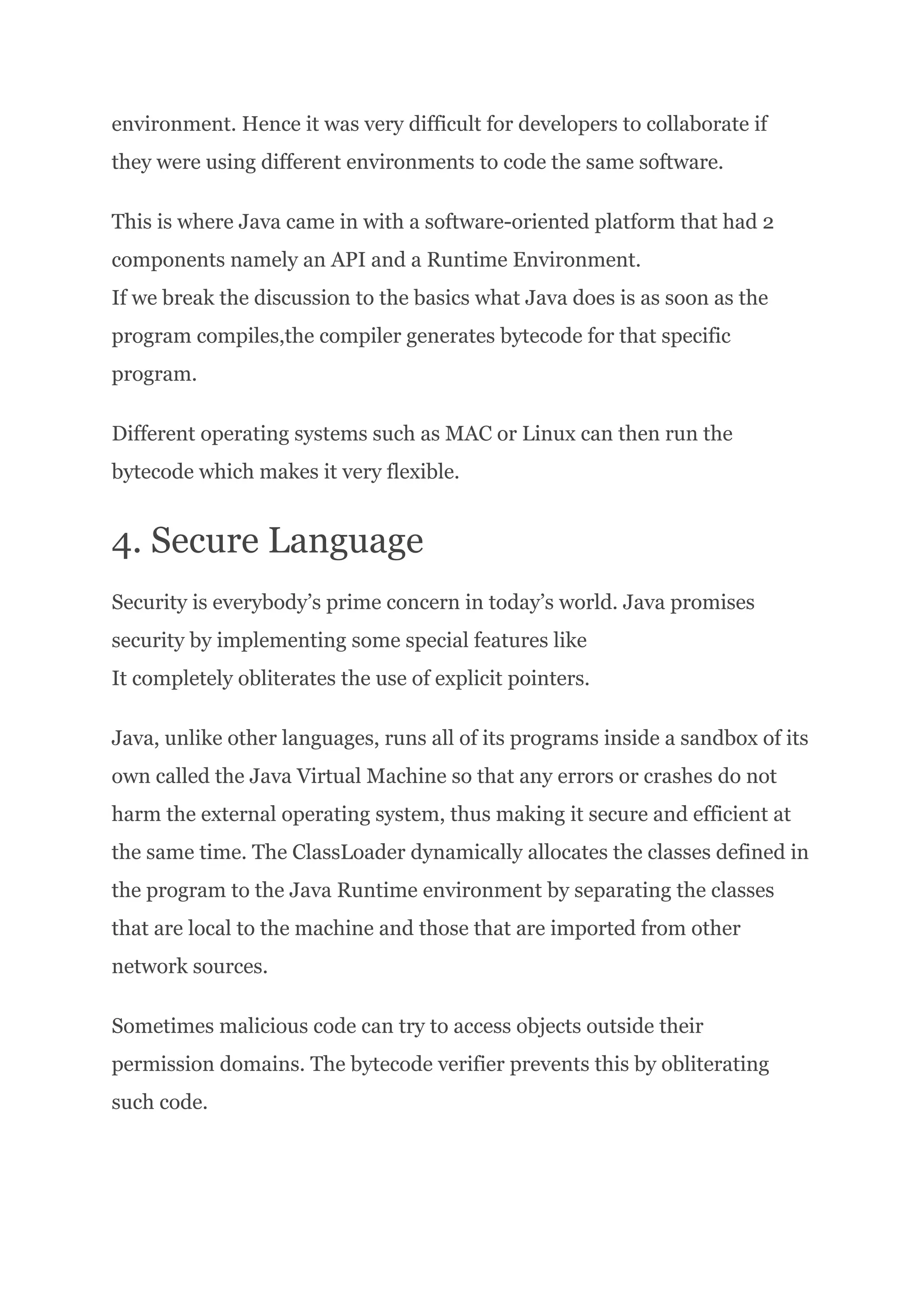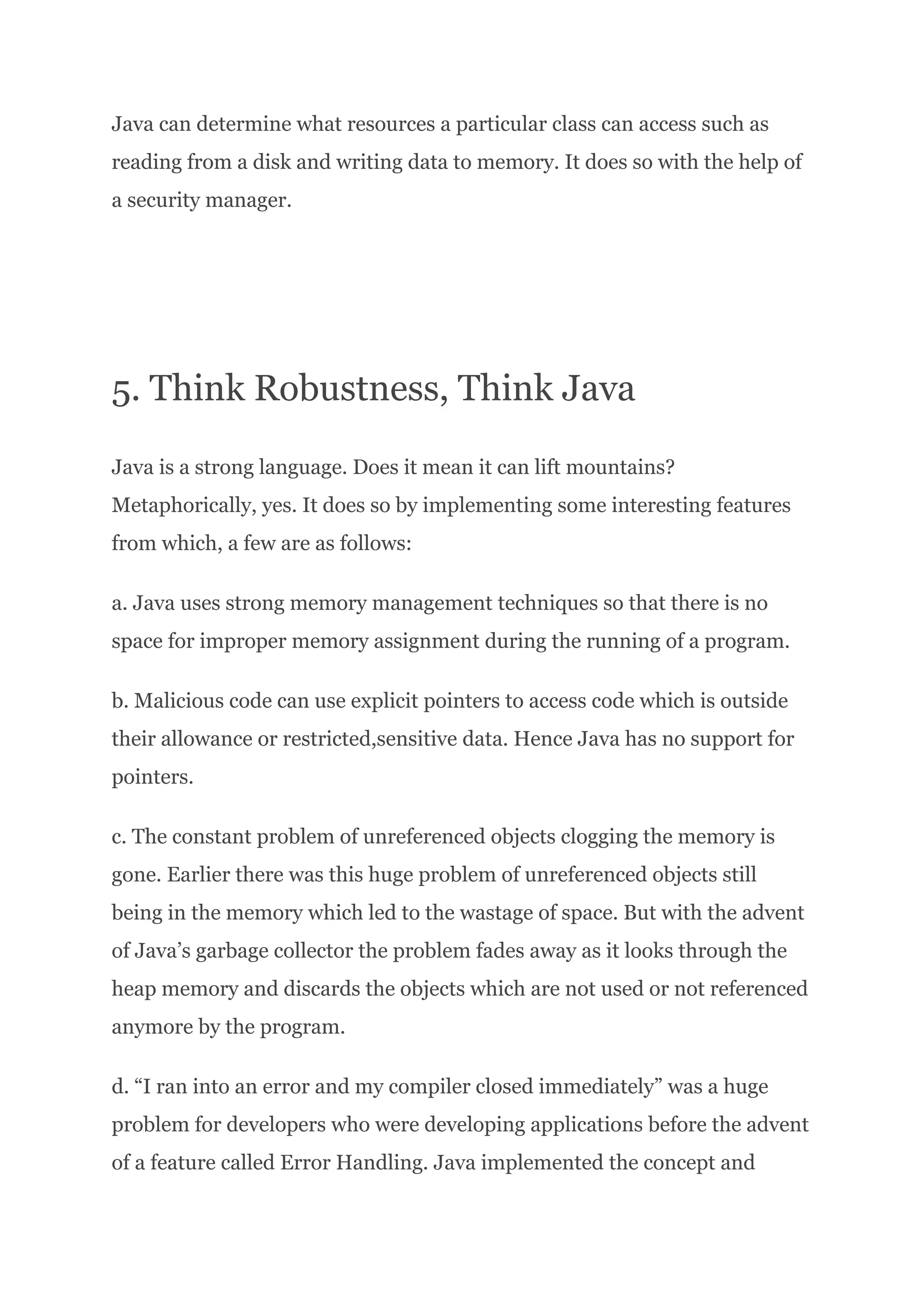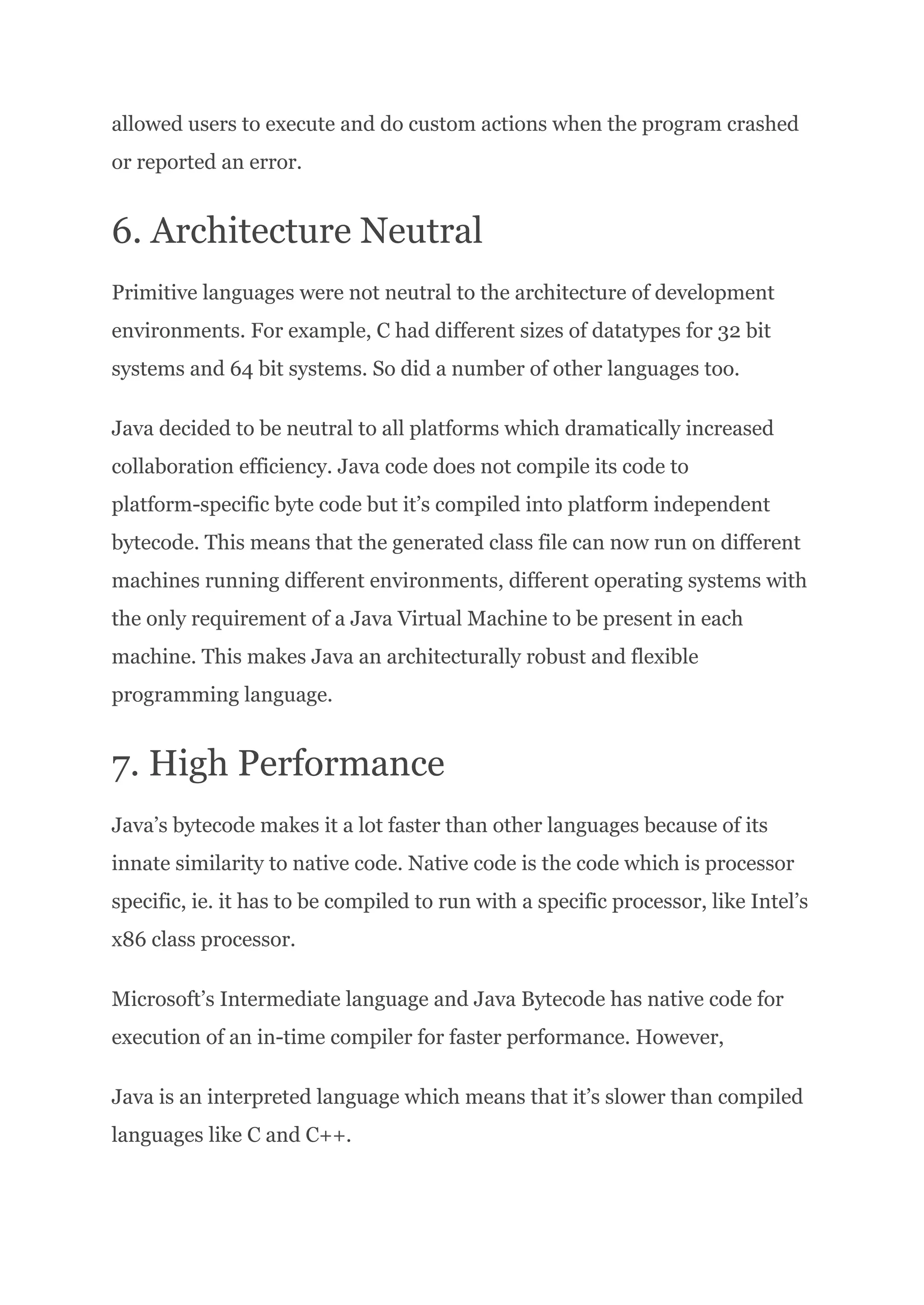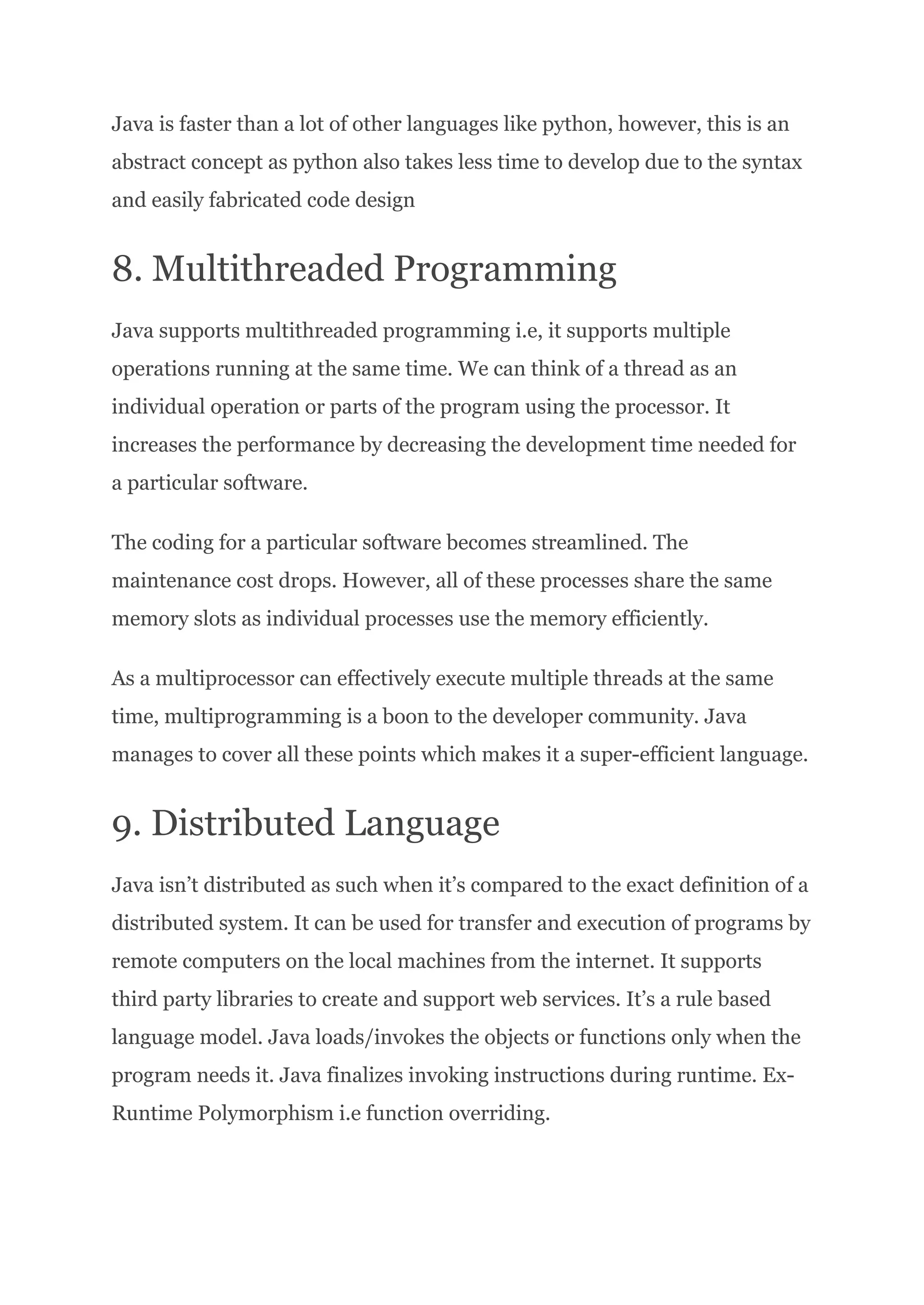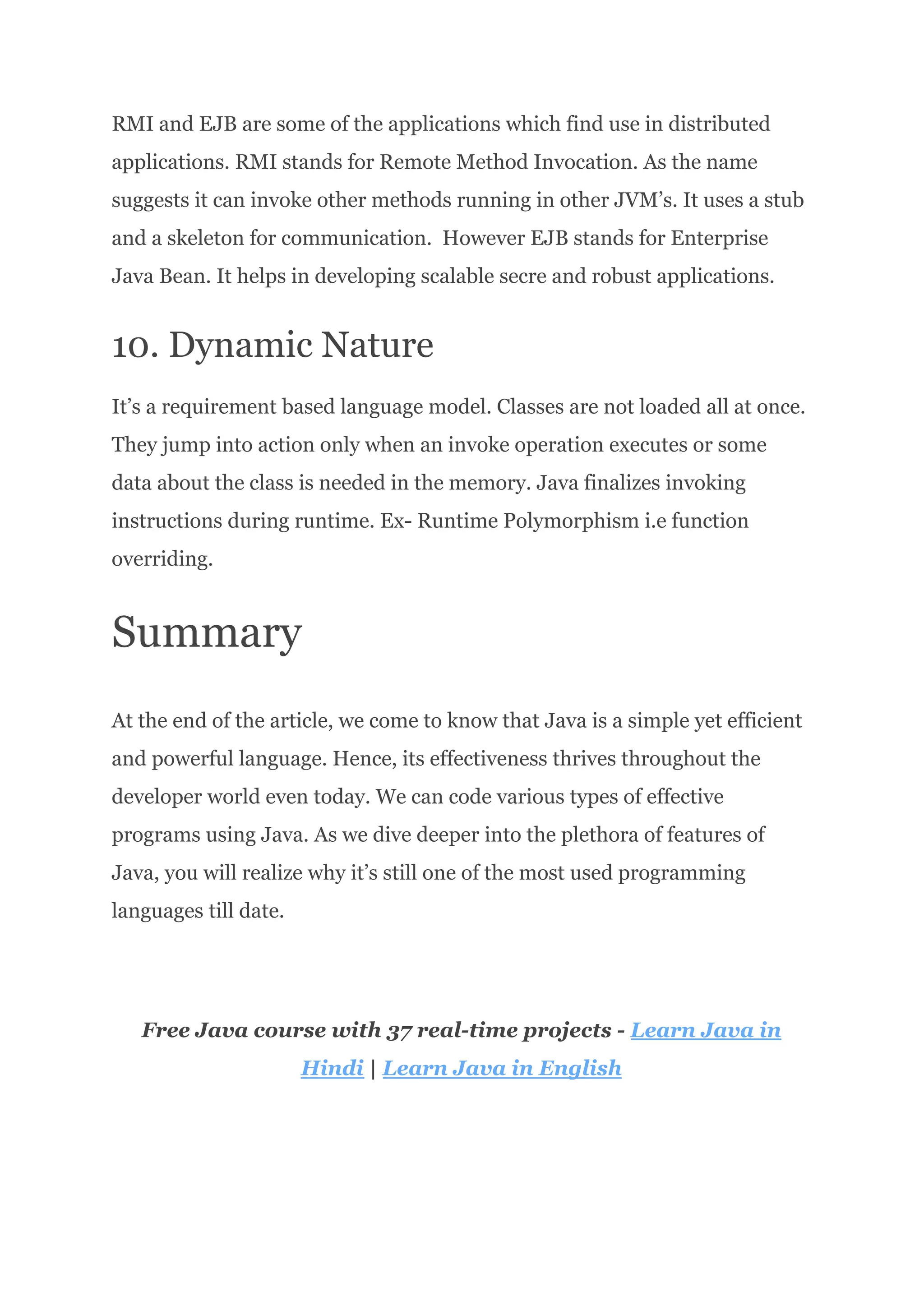Java is a widely used programming language and is designed for
the distributed environment of internet. It is a general-purpose
programming language that is concurrent, class-based, and
object-oriented. It is free to access and we can run it on all the
platforms. Java follows the principle of WORA (Write Once, Run
Anywhere), and is platform-independent

